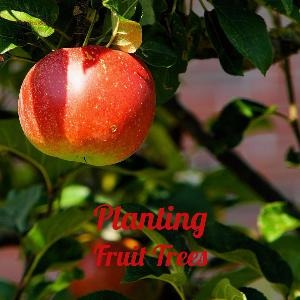Some fruit trees need a pollinator, or a companion tree, in order to produce fruit, while other fruit trees are self-fruitful and require no pollinator. The Red Delicious apple should be pollinated with a Yellow Delicious, but the Yellow Delicious itself is self-pollinating. The Yellow Delicious apple will pollinate most apples, and when in doubt about an apple variety, plant a Yellow Delicious, or a crabapple tree, with it. Most apple varieties will produce more if they are planted alongside another variety, or a crabapple tree. Apricots that do well in our harsh winters, such as the Chinese, Tilton, Moorpark, and Perfection are self-pollinating, but will bear more heavily when planted with another variety, or more than one tree of the same variety. To get big apricots, thin excess fruit off the branches in mid-spring leaving two to four inches between individual apricots. Sweet cherries are a tender fruit tree, but the right varieties can do well under the right conditions. Some of these varieties are Lambert, Black Tartarian, Van, and Lapins. The Lapins cherry is self-pollinating, but the Lambert must be planted with a Black Tartarian or Van. The Black Tartarian and Van will pollinate each other. Pie cherries, such as Montmorency and North Star, are much more hardy than sweet cherries and are good pollinaters for sweet cherries, but are self-fruitful themselves. Pollination is not a problem with peach trees, but be warned: they are not usually a hardy fruit tree for our area and may winter kill. Plant them in an area protected from winter sun and wind. Varieties best for our area are Reliance and Early Elberta, although other varieties may survive in some areas. Anjou and Bartlett pears do best when planted together and should also be planted in a protected area. Plums are self-pollinating. Varieties that do well in our area include Green Gage, Santa Rosa, Superior, Toka, Italian, and Stanley. The Italian and Stanley are actually classified as prunes, meaning they have a higher sugar content than other plums and are much sweeter than plums when eaten fresh.




